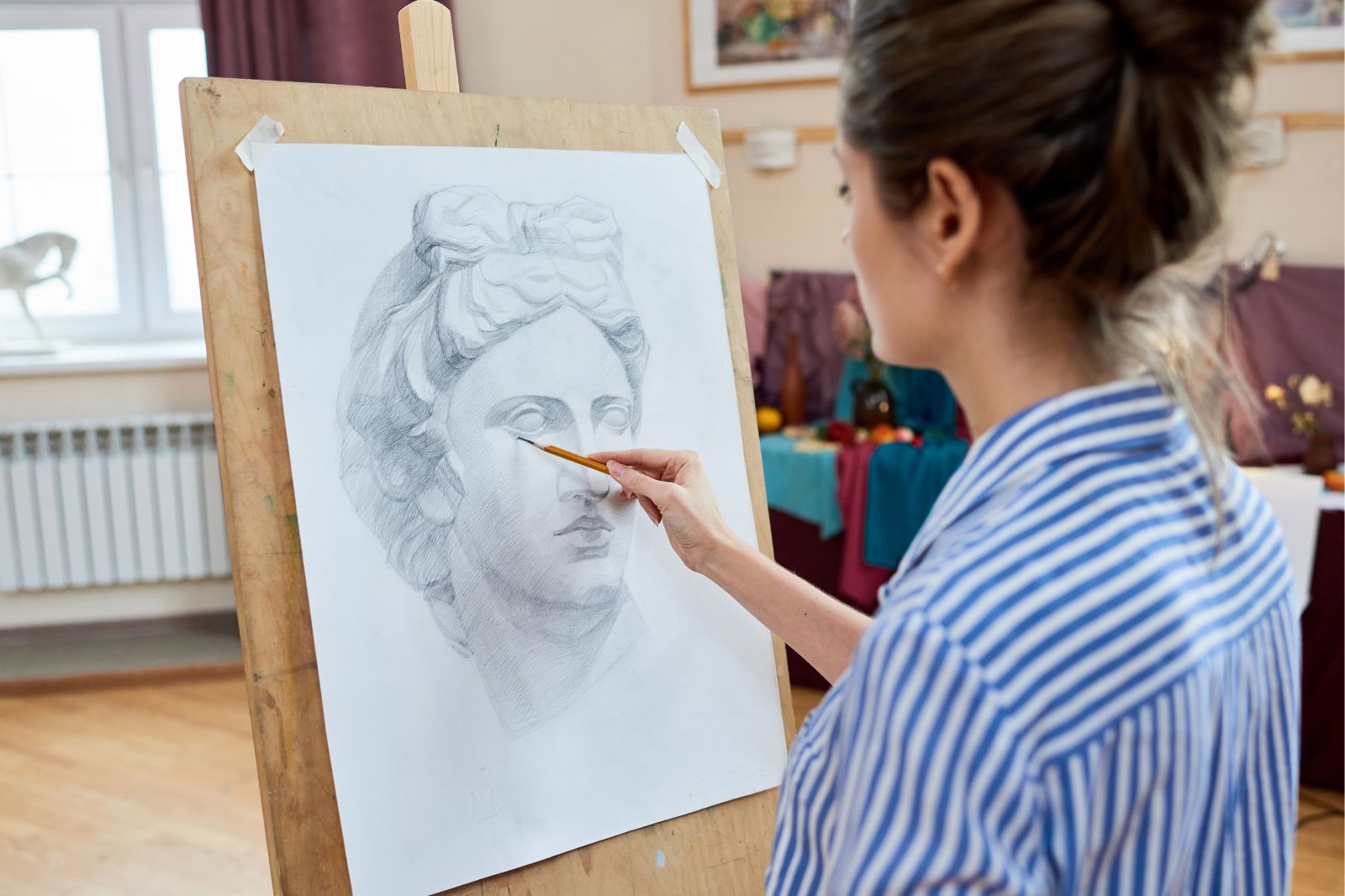How to Learn Anatomy for Art

Understanding human anatomy is crucial for any artist who wishes to create lifelike and dynamic figures. Whether you’re an illustrator, a seasoned painter, or a sculptor, mastering anatomy helps bring realism and emotion to your work. Learning anatomy is hard, I won’t lie (every artist will tell you what a journey it is to learn hand perspectives) but with the right approach and resources, you can break it down into manageable steps. This guide will provide practical tips and techniques to help you learn anatomy effectively and improve your artistic skills.
Start with Basic Human Anatomy
View this post on Instagram
Before diving into complex details, familiarize yourself with the basic structure of the human body. Begin by studying the major body parts and their general functions.
- Skeleton: Understand the basic skeletal structure, including the major bones such as the skull, ribcage, spine, and limbs. Knowing the skeletal framework helps you understand how muscles and skin fit over bones.
- Muscle Groups: Learn about the major muscle groups and their functions. Focus on the muscles that impact the surface of the body, such as the biceps, triceps, quadriceps, and abdominal muscles.
- Proportions: Study the standard proportions of the human body. You can look in the mirror to help. The traditional “8-heads tall” rule is a helpful guide for creating well-proportioned figures.
Use Anatomy References
View this post on Instagram
Having accurate references is essential for learning anatomy. Utilize a variety of resources to get a comprehensive understanding:
- Anatomy Books: Invest in quality anatomy books specifically designed for artists. Titles like Anatomy for Sculptors by Uldis Zarins and Figure Drawing: Design and Invention by Michael Hampton offer detailed anatomical information and artistic insights. You can also look for the Morpho: Anatomy for Artists book series. Each one focuses on specific elements of anatomy.
- Online Resources: Websites like Proko and AnatomyTools provide interactive anatomy models, tutorials, and videos. These resources often offer free content and additional paid materials for more in-depth learning.
- Medical Illustrations: Study medical illustrations and diagrams to get a detailed view of anatomy. Websites like the Visible Body offer 3D models that allow you to explore anatomical structures from various angles.
Practice Drawing from Life
One of the most effective ways to learn anatomy is through regular practice:
View this post on Instagram
- Figure Drawing: Pack up your art essentials and attend life drawing classes or workshops. This practice helps you understand the human form in various poses and improves your observational skills.
- Gesture Drawing: Focus on capturing the movement and energy of the human body through quick, expressive sketches. Gesture drawing helps you grasp the flow and dynamic nature of the figure.
- Studying Photographs: Use high-quality photographs of people in different poses as references. Pay attention to the relationship between bones and muscles and how they influence the overall appearance.
Break Down the Anatomy
To make learning anatomy more manageable, break it down into smaller sections:
View this post on Instagram
- Head and Face: Study the structure of the skull, facial muscles, and features. Learn about the proportions of the face and how different expressions affect the appearance of facial features. Break down the face into ovals, circles, and triangles for the chin area.
- Torso: Understand the ribcage, spine, and abdominal muscles, use rectangular shapes. Practice drawing the torso from different angles to see how it changes with movement and perspective.
- Arms and Legs: Focus on the bones and muscles of the arms and legs. Learn how joints like the shoulder, elbow, hip, and knee work together to create movement. Breaking down the libs into cylinders joined by circles.
- Hands and Feet: These areas are often challenging but crucial for realism. Study the bones and muscles of the hands and feet, and try to break them down into basic triangles, circles, and cylinders too.
Stay Consistent and Patient
Learning anatomy is an ongoing process that requires time and dedication:
- Regular Practice: Make anatomy studies a regular part of your artistic practice. Sketching every day is important.
- Be Patient: Progress may be slow initially, but persistence pays off. Celebrate small victories and continue to challenge yourself with new anatomical studies and artistic projects.
- Keep Learning: Anatomy is a vast subject, and there is always more to learn. There are plenty of Facebook groups and millions of posts on Instagram that share free drawing bases to use and tips/advice for learning anatomy.
Conclusion
Mastering anatomy for art is a valuable investment in your artistic development. By starting with the basics, using accurate references, practicing regularly, and breaking down complex shapes, you can improve your ability to create realistic and dynamic figures. Remember to be patient and never give up! Keep exploring new ways to integrate anatomy into your art. With dedication, you’ll find that your understanding of human anatomy will greatly improve over time.
Trusted Insights from Artists
At Art Life Today, our passion for arts and crafts is at the heart of everything we do. We understand that the right tools and materials can make all the difference in your creative projects, so we take our responsibility as reviewers seriously. Our goal is to help you discover the best products that will inspire your creativity and bring your artistic visions to life.